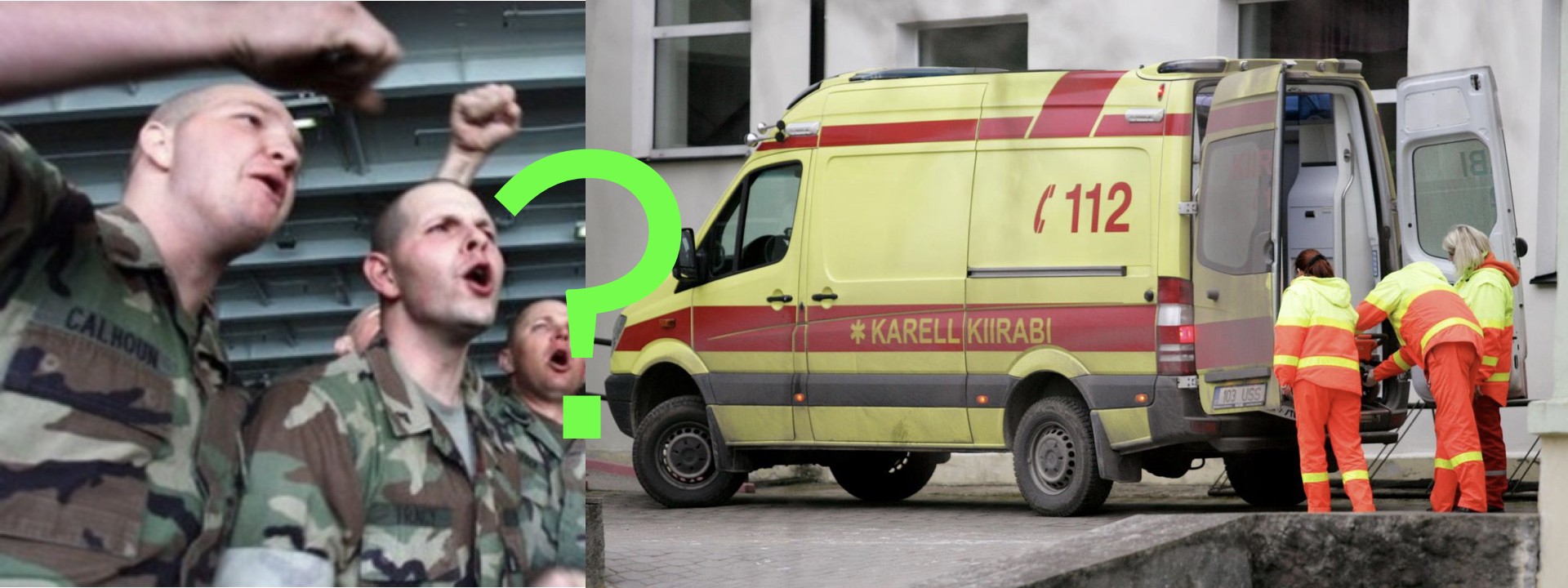#BalticBrief: Three Men Kick Ambulance in Estonia, NATO Blamed
How news about three English-speaking men damaging an ambulance in Tapa spread
#BalticBrief: Three Men Kick Ambulance in Estonia, NATO Blamed

How news about three English-speaking men damaging an ambulance in Tapa spread

On May 16, Estonian regional media outlet Virumaa Teataja reported an incident in which three English-speaking men asked an ambulance driver to give them a ride. After the driver refused, one of the men kicked the vehicle and damaged the doors. The article mentioned that Meelis Kukk, the chairman of Viru Hospital, was in the vehicle and confirmed the incident, but the report did not share any more comments.
Viru Hospital is in the town of Tapa, which is also where NATO Enhanced Forward Presence (eFP) troops are located. Although the identities of the three delinquents were not publicly revealed in the open records by the Estonian police, the Russian version of the Estonian media outlet Postimees suggested that the men were NATO soldiers.
Virumaa Teataja is part of Postimees media, so the news in both Estonian and Russian appeared within two and a half hours of each other.

The media outlets took slightly different takes on the delinquents. The Estonian version did not mention who they were in the title, while the Russian version suggested that the three men were NATO soldiers. The Estonian article garnered three times less shares on Facebook than the Russian version, or 250 and 698 shares respectively.
The Audience Response
The number of comments for both articles are similar — ten for the Estonian article and 12 for the Russian article. Both audiences believed that these were NATO soldiers, and therefore the attitudes of both audiences was similar.
@DFRLab identified four out of ten comments suggesting that NATO soldiers behave as masters or occupiers in Estonia. The respective comments are translated and highlighted in pink below.

The Russian version of the news story generated more comments clearly suggesting the same. Nine out of twelve comments suggested that NATO troops in Estonia act as occupiers.

Though the Estonian version generated less hostile comments clearly directed at NATO troops in Tapa, the overall attitude towards the incident was negative.
Media Spread
@DFRLab did not identify any other reporting on the incident in Estonian, nevertheless there were a few Russian language outlets that picked up the story. The other Estonian media outlet that published the news in Russian was Estonian Public Broadcasting (ERR). The article did not suggest that these were NATO soldiers in particular, nor did Estonian media outlet in Russian Vecherka, and Sputnik Estonia. Nevertheless, Sputnik’s article elaborated on previously reported cases when NATO soldiers misbehaved and, as the article put it, “acted as occupiers.”
Kremlin-backed Russian media outlet in Estonia Baltnews.ee took advantage of the story. Two days after the news was first released, Baltnews.ee published a news story titled “Did NATO soldiers attack the ambulance in Estonian Tapa?” in which Baltnews cited Sputnik’s Estonia list of previous incidents that allegedly involved NATO soldiers.
The next day Baltnews.ee published an opinion article by Vladimir Postnikov titled “Who will defend Estonians from NATO ‘defenders’?”

The first article was shared 77 times on social media, and the subsequent opinion piece garnered nearly double that number of shares with 145.
The only two Russian media outlets that covered the story was Komsomolskaya Pravda and EurAsia Daily. Komsomolskaya Pravda also did not clearly suggest that these were NATO soldiers, but hinted that there were NATO troops in the town of Tapa. EurAsia Daily was more aggressive. Its article used the title “Hooligan soldiers of NATO in Estonia damaged an ambulance”. Nevertheless, the story did not gain traction.

According to the digital content analysis tool Buzzsumo, the EurAsia Daily article was shared just seven times.
Conclusion
Though the identity of the delinquents is not publicly revealed, all media coverage about the incident mentioned the fact that Tapa is where NATO eFP troops reside. The news did not spread much on the Estonian language information space. It was mostly addressed by the Russian language media in Estonia. Kremlin-backed media outlet Baltnews.ee was the most significant in suggesting that these could have been NATO soldiers. Sputnik Estonia did not hint it in its title, but added a paragraph listing previous incidents that allegedly involved NATO soldiers. Russian media outlets did not take advantage of the story, as only two media outlets picked it up.
Follow along for more in-depth analysis from our #DigitalSherlocks.

